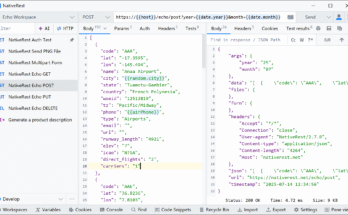The education industry has witnessed a massive change with advance Education Technology. From hiring an assignment helper to digging deeper to explore their area of interest, education technology opens the doors to new opportunities and an unlimited source of information. Students, educators, and parents rely on various modern gadgets and applications to simplify learning and make it more engaging.
However, despite the fuss over the advantages of Education Technology. Experts argue that over-dependence on modern tools can damage young learners. For instance, educational technology has widened the social gap, spiked mental illness cases, and led to the regression of children’s academic and cognitive development.
Taking that into account, I’ll discuss the advantage and disadvantages of using educational technology so students can overcome the challenges to excel academically.
The Upsides of EdTech in Education
-
Interactive Learning Experience
Thanks to phones, tablets, and computers, students can explore various sources –videos, digital books, applications, and more to learn about a context and become more productive. Moreover, having access to endless resources allows young learners to recognise their potential area of interest and determine their future profession.
-
Easy Access to Information
Multiple studies suggest that most students hire essay paper help because they lack proper knowledge about a topic. Without sufficient resources, students don’t know how to approach the task and lose interest in learning. Fortunately, students approach assignments with much more enthusiasm when they have enough resources to refer to. They can access different sources, gain insight into the required topics, and create informative papers.
-
Digital Literacy
There’s no denying that the majority of the corporate offices these days want employees with technical/digital skills. Since almost all industries are dependent on different technological trends, students need to acquire the most sought-after tech skills. Implementing EdTech into the current curriculum can undoubtedly reduce the skill gap and make potential employees digitally literate.
-
Cuts Educational Costs
Education requires large investments. College fees, books, tutor fees, hostel charges, food and convenience, and so on, you spend thousands of dollars to get your dream degree from a top Australian university. Thankfully, the introduction of e-books, online courses, and free study tools has been a blessing for low-income families. Students with financial stringencies now have the opportunity to learn and access resources on equal terms with their classmates.
-
Quick Performance Evaluation
Before Education Technology, teachers had to spend a significant amount of time evaluating students’ academic performance. It was extremely time-consuming, and teachers could not customise lessons to meet students’ needs. However, digital technologies have created a win-win situation for students and teachers. Using various evaluation tools, teachers can collect data efficiently and identify students struggling to perform well to modify the lessons for students’ better understanding.
-
Self-paced Learning
Digital/educational technologies have enabled students to learn at their pace. For example, in the hybrid learning model, students can listen to teachers’ lectures in real-time, participate in discussions and socialise with their peers. Moreover, with Education Technology, students who are shy to interact in class can resolve their queries quickly without worrying about getting mocked by other students. Also, the independent learning model gives students the confidence to hone their time management skills.
The Downsides of EdTech in Education
-
Increases Distraction
One cannot forget students’ continuous urge to check their phones. Namely, with the extended use of social media sites, students are accustomed to hopping from one app to another to get the latest updates on their interests. However, the biggest effect of this practice is that it hampers students’ attention span. Research suggests that students from Generation Z have an attention span of just 8 seconds!
-
Reduces Cognitive Development
Digital innovation comes with good intentions. But when everything is getting automated, students are losing touch with the basics. For example, why would children learn to do basic math when there’s a calculator at their aid? So, automating different learning activities makes students dependent on technology, restricting them from performing basic cognitive activities. In addition, using technology to solve academic challenges can impact students’ problem-solving abilities.
-
Reduce Human Interactions
Although EdTech improves student advancement and project collaboration, it has reduced real-time conversation. Technology has brought all types of resources to a finger’s reach. As a result, both children and young adults are now engrossed in their tech devices. Since they don’t participate in face-to-face interactions and share their challenges, they are more likely to fall victim to depression.
-
Expensive Maintenance Costs
You cannot overlook the cost of maintaining modern tech gadgets and software. In a world where technological innovation happens now and then, you will either have to upgrade the system or require the latest device to fulfill your academic needs. So, students and educators have to estimate the maintenance cost before purchasing a new tool.
-
Reduced Teaching Staff
The education industry is incomplete without teachers. But unfortunately, with the introduction of EdTech tools, the role of teachers is slowly fading. Many educators are turning to automating the teaching process by introducing specific applications which can reduce the regular number of teaching staff. As a result, the existing teachers have more responsibilities to meet without any pay increase.
EdTech: Blessing or Curse – Final Say
Whether EdTech is a boon or bane is entirely subjective, as different individuals have different options about its contribution to the education system.
Implementing technology to automate learning has many benefits, but acknowledging its challenges is imperative. For example, learners have a broad spectrum of data and resources to access and explore, making assignment writing accessible and engaging lessons. However, there are chances where students can waste time surfing the social media sites instead of just sticking to the academic sites.
Therefore, educators must address the disadvantages of educational technology and step forward with proper solutions. Parents should also identify the challenges beforehand and take the required action by having a face-to-face discussion or opposing realistic restrictions.
Only then the primary purpose of adopting EdTech: improving the quality of learning and teaching in the digital and traditional classrooms, can be achieved.
read more: The Emerging Trend of Cloud Computing in the Enterprise IT World




